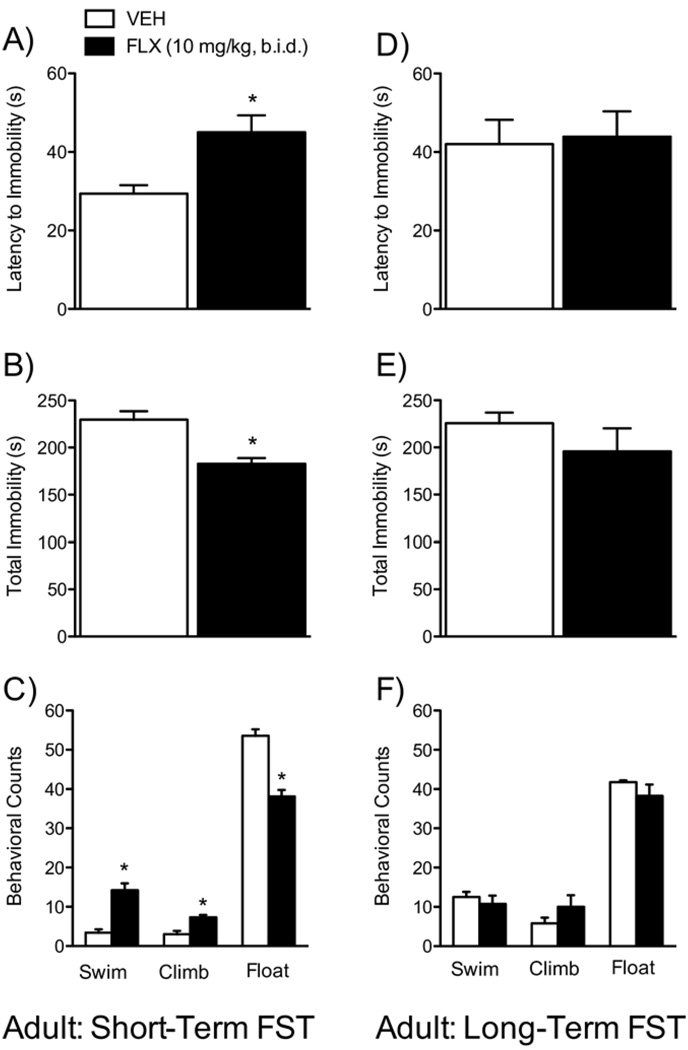Figure 6.
Effects of fluoxetine (10 mg/kg, b.i.d.) treatment in adult rats (matched control group) on behavioral responsivity to forced swim stress (A–F). Short-term (n = 7/group): FLX-treated rats displayed significantly longer latencies to immobility (A), lower total immobility (B), higher swimming and climbing counts and lower floating counts (C) when compared with VEH-treated control rats. Long-term (n = 7/group): no differences were observed in any of the measures assessed between the groups. *Significantly different from VEH-treated rats (p < .05). Data are presented as latencies to become immobile and total immobility (in seconds) and as cumulative 5-second intervals of swimming, climbing, and floating counts (mean ± SEM). b.i.d., twice daily; FLX, fluoxetine; FST, forced swim test; VEH, vehicle.

